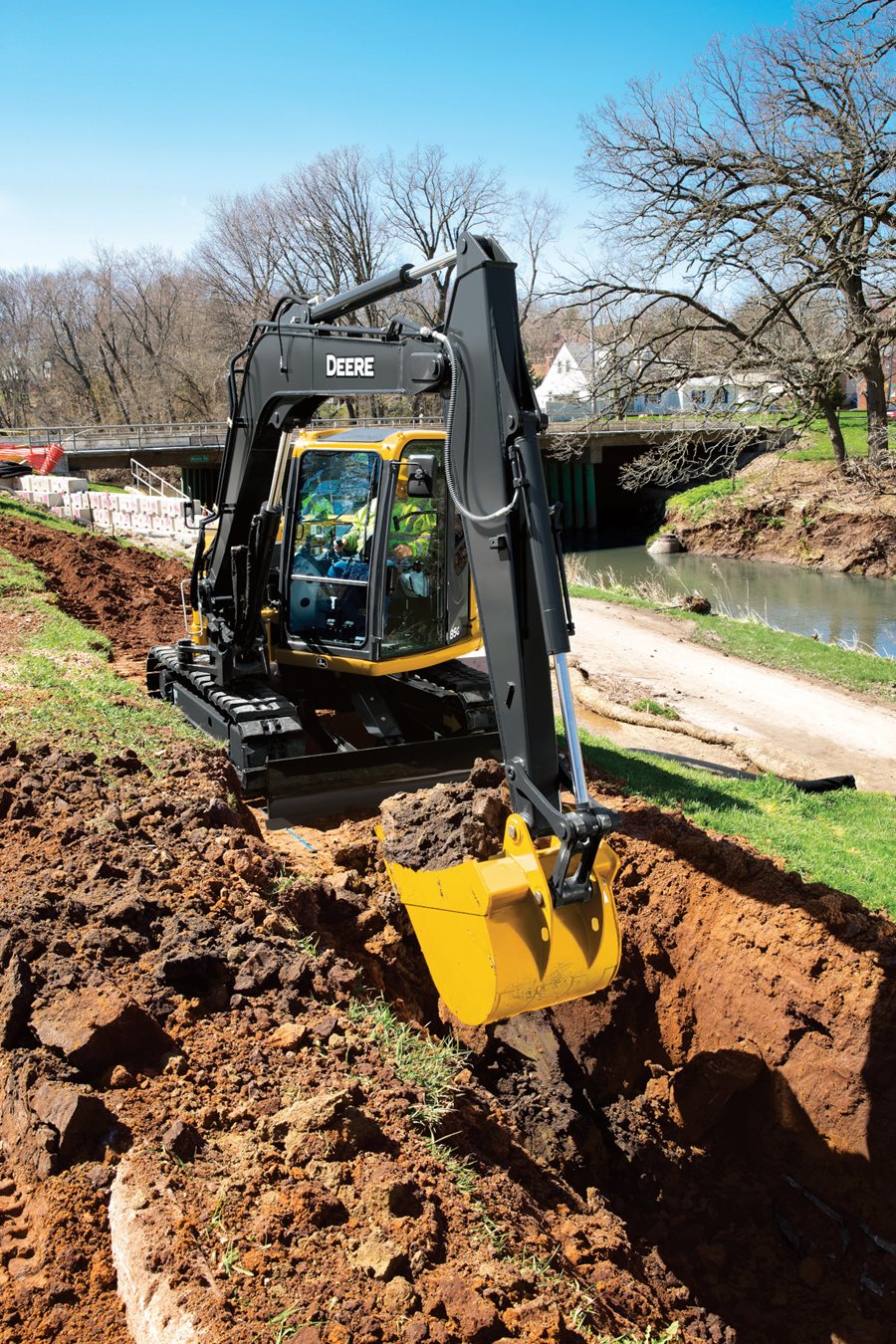
Compact Excavator
Inspired by customer feedback, thoughts and ideas, we went to work on machines that better meet your needs. Including a more spacious cab with a wider entryway. A larger expanse of glass for unsurpassed visibility. Fuel-saving auto-idle/auto shutdown and power/economy work modes. Plus a new model, the 30G, which rounds out the John Deere line of excavators.
Request a QuoteMini-Ex Attachment Options
John Deere compact excavator attachments are designed to optimize performance and productivity. Their heavy-duty construction delivers maximum uptime and long life — whether you’re hoisting hay bales, digging ditches, rooting out rocks, or managing vegetation. What’s more, these attachments are compatible among a number of machines throughout the John Deere Compact Construction Equipment lineup, letting you increase utilization in a wide variety of tasks.
Features and Specifications
When it comes to compact excavators, understanding the features and specifications is essential for choosing the suitable machine for your needs. Here, we will explore some important aspects to consider:

Digging Depth and Reach
The digging depth and reach determine the machine's capability to excavate and handle materials. Consider the depth and get the requirements of your specific projects to ensure the compact excavator can efficiently perform the tasks at hand.

Size
Size is an essential factor affecting the machine's maneuverability and suitability for different job sites. Evaluate the dimensions of the compact excavator, including height, width, and length, to ensure it can easily navigate the work environment.

Multiple Hydraulic Circuits
Compact excavators with multiple hydraulic circuits offer versatility for simultaneously operating various attachments. This feature allows you to perform numerous functions, such as digging, lifting, and utilizing additional tools, enhancing efficiency and productivity.

Mobilization
Assess the mobilization capabilities of the compact excavator, including its ability to move on different terrains and across various slopes. Consider track design, ground clearance, and traction to ensure optimal performance in your work conditions.

Hydraulics and Attachments
Evaluate the hydraulic system and the compatibility of attachments with the compact excavator. Consider the hydraulic flow rate and pressure to ensure it matches the requirements of the attachments you plan to use.

Dump Height
Dump height refers to the maximum altitude at which the machine can deposit materials. It is an important consideration when working with trucks or containers that require a specific dumping height.

Operating Weight
The operating weight of the compact excavator impacts its stability and lifting capacity. Consider the importance of the machine to ensure it can handle the loads and tasks required for your projects.

Bore
Bore refers to the diameter of the cylinder in the compact excavator's hydraulic system. It affects the force and speed of the machine's hydraulic functions, such as lifting and digging.

Net Power
Net power refers to the power output of the compact excavator's engine after accounting for various losses. It indicates the machine's overall performance and capability to handle demanding tasks.

Swing System
The swing system enables the compact excavator to rotate horizontally. Consider the swing system's capacity and smoothness of operation, as it impacts the machine's maneuverability and ability to work in tight spaces.

Engine Fuel
Assess the type of fuel the compact excavators engine uses. This can impact operational costs, availability of fuel, and environmental considerations.

Maximum Governed Speed
Maximum governed speed refers to the top speed at which the compact excavator can operate. Consider this specification if you require fast mobilization or your work environment demands quick travel between job sites.
Compact Excavator Frequently Asked Questions
Where Can I Invest in a Compact Excavator?
If you’re ready to purchase a compact excavator for an upcoming project, there are a few points to keep in mind. Take time to look at the selection available at Doggett Equipment and get a better idea of what’s out there. With a little time, you will be ready to find a fit that exceeds your expectations.
How Many Hours Does a Compact Excavator Last?
If you’re looking to invest in an excavator, then you likely want to know how long it is going to last. Basically, the average excavator of this size is constructed to last roughly 10,000 hours. However, extra wear and tear to the undercarriage or the tracks might cause you to require a replacement sooner rather than later.
What Does a Compact Excavator Do?
When you’re looking for a compact excavator for sale, it can help to have some insight into what this tool can help you achieve. Basically, the machines can be applied to a variety of purposes common in the construction field. These tasks include trenching, leveling, grading, drilling, digging, and more.
How Can I Find the Best Compact Excavator?
Picking out the perfect excavator for your needs is about a lot more than simply looking at the options available online. To sort through the massive amount of options out there, you will find that it is best to limit your search results by the most trusted brands of the industry.
Can Mini Excavators Break Through Concrete?
Yes! It is entirely possible for you to use the best compact excavator to break through tough surfaces and substances. If you’re dealing with concrete, for example, you can use your compact excavation equipment to break through the surface with ease and help you complete your job in a perfect way.

